#in many ways a lot of the show draws on gothic and victorian genre tropes 5b just does so more overtly as i've said before
Text


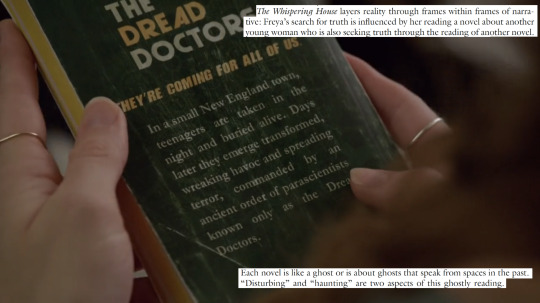



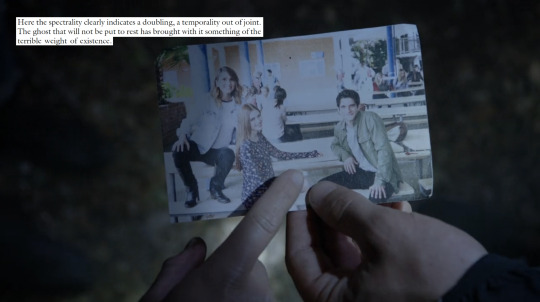


Hauntology in Teen Wolf
Haunted Images, Deadness, and Impossible Mourning by Matt Foley / The Hauntology/Narratology of the Neo-Victorian Ghost Story by Brenda Ayres / “Penelope Was Not a Phantom”: Everyday Hauntology in Alice Munro and Margaret Atwood by Joakim Wrethed / “What She Had Seen Was Final”: Everyday Hauntology, the Threat of Male Violence and the Power of Fiction in Alice Munro’s “Free Radicals”, “Runaway” and “Passion” by Joakim Wrethed
#teen wolf#hauntology#teen wolf meta#twmeta#peter hale#kate argent#lydia martin#scott mcall#malia tate#gerard argent#web weave#webweaving#mine#teen wolf academia#BACK TO MY ROOTS Y'ALL#anyways i could make this infinitely long if i wanted to there's sooo much of it in teen wolf#in many ways a lot of the show draws on gothic and victorian genre tropes 5b just does so more overtly as i've said before#but if only i could get su completely embedded in teen wolf and to watch the whole thing she could come up with some insane gothic#references within the show but alas that hasn't happened yet
34 notes
·
View notes
Text
A Horror History of Werewolves
As far as horror icons are concerned, werewolves are among the oldest of all monsters. References to man-to-wolf transformations show up as early as the Epic of Gilgamesh, making them pretty much as old as storytelling itself. And, unlike many other movie monsters, werewolves trace their folkloric roots to a time when people truly believed in and feared these creatures.
But for a creature with such a storied past, the modern werewolf has quite the crisis of identity. Thanks to an absolute deluge of romance novels featuring sometimes-furry love interests, the contemporary idea of “werewolf” is decidedly de-fanged. So how did we get here? Where did they come from, where are they going, and can werewolves ever be terrifying again?
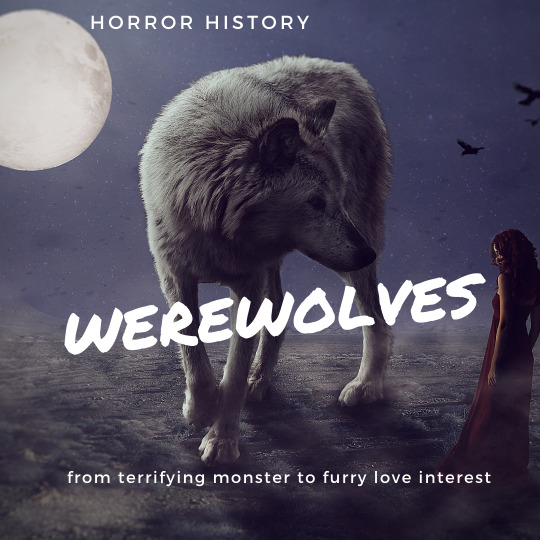
Werewolves in Folklore and Legend
Ancient Greece was full of werewolf stories. Herodotus wrote of a nomadic tribe from Scythia (part of modern-day Russia) who changed into wolves for a portion of the year. This was most likely a response to the Proto-Indo-European societies living in that region at the time -- a group whose warrior class would sometimes don animal pelts and were said to call on the spirit of animals to aid them in battle (the concept of the berserker has the same roots -- just bears rather than wolves).
In Arcadia, there was a local legend about King Lycaon, who was turned to a wolf as punishment for serving human meat to Zeus (exact details of the event vary between accounts, but cannibalism and crimes-against-the-gods are a common theme). Pliny the Elder wrote of werewolves as well, explaining that those who make a sacrifice to Zeus Lycaeus would be turned to wolves but could resume human form years later if they abstained from eating human meat in that time.
By the time we reach the Medieval period in Europe, werewolf stories were widespread and frequently associated with witchcraft. Lycanthropy could be either a curse laid upon someone or a transformation undergone by someone practicing witchcraft, but either way was bad news in the eyes of the church. For several centuries, witch-hunts would aggressively seek out anyone suspected of transforming into a wolf.
One particularly well-known werewolf trial was for Peter Stumpp in 1589. Stumpp, known as "The Werewolf of Bedburg," confessed to killing and eating fourteen children and two pregnant women while in the form of a wolf after donning a belt given to him by the Devil. Granted, this confession came on the tail-end of extensive public torture, so it may not be precisely reliable. His daughter and mistress were also executed in a public and brutal way during the same trial.
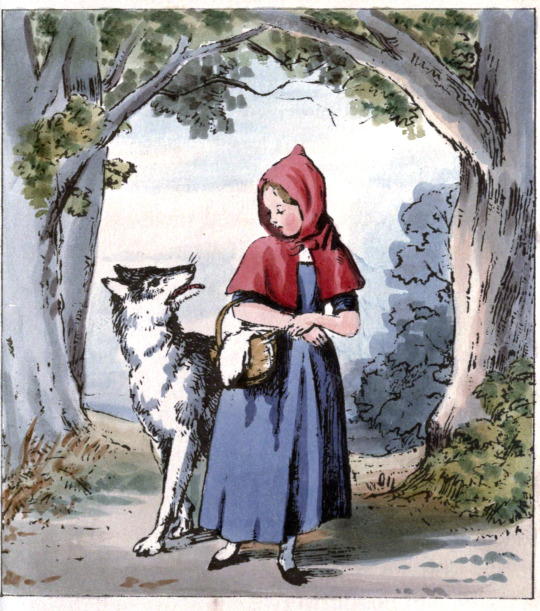
Who’s Afraid of the Big Bad Wolf?
The thing you have to understand when studying folklore is that, for many centuries, wolves were the apex predator of Europe. While wolf attacks on humans have been exceedingly rare in North America, wolves in Europe have historically been much bolder -- or, at least, there are more numerous reports of man-eating wolves in those regions. Between 1362 and 1918, roughly 7,600 people were reportedly killed by wolves in France alone, which may have some bearing on the local werewolf tradition of the loup-garou.
For people living in rural areas, subsisting as farmers or hunters, wolves posed a genuine existential threat. Large, intelligent, utilizing teamwork and more than capable of outwitting the average human, wolves are a compelling villain. Which is probably why they show up so frequently in fairytales, from Little Red Riding Hood to Peter and the Wolf to The Three Little Pigs.
Early Werewolf Fiction
Vampires have Dracula and zombies have I Am Legend, but there really is no clear singular book to point to as the "First Great Werewolf Novel." Perhaps by the time the novel was really taking off as an artform, werewolves had lost some of their appeal. After all, widespread literacy and reading-for-pleasure went hand-in-hand with advancements in civilization. For city-dwellers in Victorian England, for example, the threat of a wolf eating you alive probably seemed quite remote.
Don't get me wrong -- there were some Gothic novels featuring werewolves, like Sutherland Menzies' Hugues, The Wer-Wolf, or G.W.M. Reynolds' Wagner the Wehr-Wolf, or even The Wolf Leader by Alexandre Dumas. But these are not books that have entered the popular conscience by any means. I doubt most people have ever heard of them, much less read them.
No -- I would argue that the closest thing we have, thematically, to a Great Werewolf Novel is in fact The Strange Case of Dr. Jekyll and Mr. Hyde by Robert Louis Stevenson. Written in 1886, the Gothic novella tells the story of a scientist who, wanting to engage in certain unnamed vices without detection, created a serum that would allow him to transform into another person. That alter-ego, Mr. Hyde, was selfish, violent, and ultimately uncontrollable -- and after taking over the body on its own terms and committing a murder or two, the only way to stop Hyde’s re-emergence was suicide.
Although not about werewolves, per se, Jekyll & Hyde touches on many themes that we'll see come up time and again in werewolf media up through the present day: toxic masculinity, the dual nature of man, leading a double life, and the ultimate tragedy of allowing one's base instincts/animal nature to run wild. Against a backdrop of Victorian sexual repression and a rapidly shifting concept of humanity's relationship to nature, it makes sense that these themes would resonate deeply (and find a new home in werewolf media).
It is also worth mentioning Guy Endore's The Werewolf of Paris, published in 1933. Set against the backdrop of the Franco-Prussian war and subsequent military battles, the book utilizes a werewolf as a plot device for exploring political turmoil. A #1 bestseller in its day, the book was a big influence on the sci-fi and mystery pulp scene of the 1940s and 50s, and is still considered one of the best werewolf novels of its ilk.
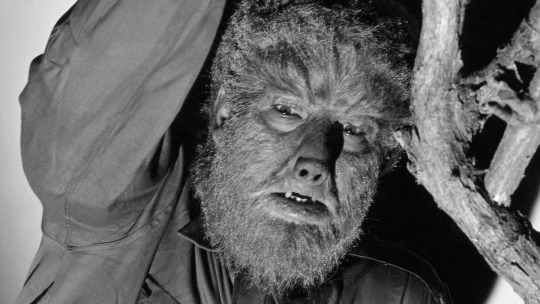
From Silver Bullets to Silver Screens
What werewolf representation lacks in novels, it makes up for in film. Werewolves have been a surprisingly enduring feature of film from its early days, due perhaps to just how much fun transformation sequences are to film. From camera tricks to makeup crews and animatronics design, werewolf movies create a lot of unique opportunities for special effects -- and for early film audiences especially (who were not yet jaded to movie magic), these on-screen metamorphoses must have elicited true awe.
The Wolf Man (1941) really kicked off the trend. Featuring Lon Chaney Jr. as the titular wolf-man, the film was cutting-edge for its time in the special effects department. The creature design is the most memorable thing about the film, which has an otherwise forgettable plot -- but it captured viewer attention enough to bring Chaney back many times over for sequels and Universal Monster mash-ups.
The Wolf Man and 1944's Cry of the Werewolf draw on that problematic Hollywood staple, "The Gypsy Curse(tm)" for their world-building. Fortunately, werewolf media would drift away from that trope pretty quickly; curses lost their appeal, but “bite as mode of transmission” would remain an essential part of werewolf mythos.
In 1957, I Was a Teenage Werewolf was released as a classic double-header drive-in flick that's nevertheless worth a watch for its parallels between werewolfism and male aggression (a theme we'll see come up again and again). Guy Endore's novel got the Hammer Film treatment for 1961's The Curse of the Werewolf, but it wasn't until the 1970s when werewolf media really exploded: The Beast Must Die, The Legend of the Wolf Woman, The Fury of the Wolfman, Scream of the Wolf, Werewolves on Wheels and many more besides.
Hmmm, werewolves exploding in popularity around the same time as women's liberation was dramatically redefining gender roles and threatening the cultural concept of masculinity? Nah, must be a coincidence.
The 1980s brought with it even more werewolf movies, including some of the best-known in the genre: The Howling (1981), Teen Wolf (1985), An American Werewolf in London (1981), and The Company of Wolves (1984). Differing widely in their tone and treatment of werewolf canon, the films would establish more of a spiderweb than a linear taxonomy.
That spilled over into the 1990s as well. The Howling franchise went deep, with at least seven films that I can think of. Wolf, a 1994 release starring Jack Nicholson is especially worth a watch for its themes of dark romantic horror.
By the 2000s, we get a proper grab-bag of werewolf options. There is of course the Underworld series, with its overwrought "vampires vs lycans" world-building. There's also Skin Walkers, which tries very hard to be Underworld (and fails miserably at even that low bar). But there's also Dog Soldiers and Ginger Snaps, arguably two of the finest werewolf movies of all time -- albeit in extremely different ways and for very different reasons.
Dog Soldiers is a straightforward monster movie pitting soldiers against ravenous werewolves. The wolves could just as easily have been subbed out with vampires or zombies -- there is nothing uniquely wolfish about them on a thematic level -- but the creature design is unique and the film itself is mastefully made and entertaining.
Ginger Snaps is the first werewolf movie I can think of that tackles lycanthropy from a female point of view. Although The Company of Wolves has a strong feminist angle, it is still very much a film about male sexuality and aggression. Ginger Snaps, on the other hand, likens werewolfism to female puberty -- a comparison that frankly makes a lot of sense.
The Werewolf as Sex Object
There are quite literally thousands of werewolf romance novels on the market, with more coming in each day. But the origins of this trend are a bit fuzzier to make out (no pun intended).
Everyone can mostly agree that Anne Rice’s Interview with a Vampire was the turning-point for sympathetic vampires -- and paranormal romance as a whole. But where do werewolves enter the mix? Possibly with Laurell K. Hamilton’s Anita Blake, Vampire Hunter books, which feature the titular character in a relationship with a werewolf (and some vampires, and were-leopards, and...many other things). With the first book released in 1993, the Anita Blake series seems to pre-date similar books in its ilk.
Blood and Chocolate (1997) by Annette Curtis Klause delivers a YA-focused version of the classic “I’m a werewolf in high school crushing on a mortal boy”; that same year, Buffy the Vampire Slayer hit the small screen, and although the primary focus was vampires, there is a main werewolf character (and romancing him around the challenges of his wolfishness is a big plot point for the characters involved). And Buffy, of course, paved the way for Twilight in 2005. From there, werewolves were poised to become a staple of the ever-more-popular urban fantasy/paranormal romance genre.
“Sexy werewolf” as a trope may have its roots in other traditions like the beastly bridegroom (eg, Beauty and the Beast) and the demon lover (eg, Labyrinth), which we can talk about another time. But there’s one other ingredient in this recipe that needs to be discussed. And, oh yes, we’re going there.
youtube
Alpha/Beta/Omegaverse
By now you might be familiar with the concept of the Omegaverse thanks to the illuminating Lindsay Ellis video on the topic (and the current ongoing lawsuit). If not, well, just watch the video. It’ll be easier than trying to explain it all. (Warning for NSFW topics).
But the tl;dr is that A/B/O or Omegaverse is a genre of (generally erotic) romance utilizing the classical understanding of wolf pack hierarchy. Never mind that science has long since disproven the stratification of authority in wolf packs; the popular conscious is still intrigued by the concept of a society where some people are powerful alphas and some people are timid omegas and that’s just The Way Things Are.
What’s interesting about the Omegaverse in regards to werewolf fiction is that, as near as I’ve been able to discover, it’s actually a case of convergent evolution. A/B/O as a genre seems to trace its roots to Star Trek fanfiction in the 1960s, where Kirk/Spock couplings popularized ideas like heat cycles. From there, the trope seems to weave its way through various fandoms, exploding in popularity in the Supernatural fandom.
What seems to have happened is that the confluence of A/B/O kink dynamics merging with urban fantasy werewolf social structure set off a popular niche for werewolf romance to truly thrive.
It’s important to remember that, throughout folklore, werewolves were not viewed as being part of werewolf societies. Werewolves were humans who achieved wolf form through a curse or witchcraft, causing them to transform into murderous monsters -- but there was no “werewolf pack,” and certainly no social hierarchy involving werewolf alphas exerting their dominance over weaker pack members. That element is a purely modern one rooted as much in our misunderstanding of wolf pack dynamics as in our very human desire for power hierarchies.
So Where Do We Go From Here?
I don’t think sexy werewolf stories are going anywhere anytime soon. But that doesn’t mean that there’s no room left in horror for werewolves to resume their monstrous roots.
Thematically, werewolves have done a lot of heavy lifting over the centuries. They hold up a mirror to humanity to represent our own animal nature. They embody themes of toxic masculinity, aggression, primal sexuality, and the struggle of the id and ego. Werewolf attack as sexual violence is an obvious but powerful metaphor for trauma, leaving the victim transformed. Werewolves as predators hiding in plain sight among civilization have never been more relevant than in our #MeToo moment of history.
Can werewolves still be frightening? Absolutely.
As long as human nature remains conflicted, there will always be room at the table for man-beasts and horrifying transfigurations.
--
This blog topic was chosen by my Patreon supporters, who got to see it one week before it went live. If you too would enjoy early access to my blog posts, want to vote for next month’s topic, or just want to support the work I do, come be a patron at https://www.patreon.com/tlbodine
51 notes
·
View notes
Text
Fandom 5k Letter
Dear Writer,
To begin with, thank you for writing for me! I really appreciate the time and effort, especially for this exchange, and I want to emphasise that I’m going to love whatever you come up with, so write what you want to write and don’t stress about it. All I ever really want from exchanges is more fic about my favourite characters so I’m very easy to please. The genre tags I’ve picked are probably bordering on the excessive but that’s just me liking a lot of different things. As always, prompts are just there if you need a little inspiration, if you already have your own idea then go for it. My previous letters can be found here; I’ve recycled a lot of old prompts in this letter but you’re welcome to draw on any I haven’t as well.
Likes – AU settings (modern, steampunk, sci-fi etc, go wild!), canon divergence AUs, grey morality, gothic vibes, fantasy elements (creepy fairies, enchantments etc), character studies, backstory, banter, road trips, found family, femslash, ladies working together, ladies kicking ass (literally or figuratively)
Dislikes – torture, depictions of rape/dubcon/sexual assault (implied/discussed is fine), pregnancy, homophobia
Ghostbusters
Erin/Holtzmann, Abby & Erin & Holtzmann & Patty
This movie was such an unexpected delight and I just want more of these ladies, kicking spectral ass and being friends and not giving a damn about what anyone else thinks of them. I loved the light tone of the movie but I also love creepy ghost stories so feel free to take these prompts in any direction.
-what’s one of their most memorable busts? Are there any particularly scary or irritating ghosts? Do they ever go beyond New York? Perhaps to investigate a ghost town, or abandoned buildings in the middle of nowhere…
-how does their ghost research progress after the events of the movie? Any big scientific breakthroughs? Do they find out more about the world through the portal? Any big mishaps that lead to more ghosts rather than less? I wouldn’t be surprised if Holtz’s unstable equipment malfunctioned somehow
-the team hanging out in their downtime (movie nights, celebrating each other’s birthdays, Patty taking them to interesting historical sites around the city…)
-there are a lot of genre AUs I’d love to see for this fandom but the first ones that spring to mind are Victorian gothic (ghost hunting would fit so perfectly) and cosmic horror (what creatures live on the other side of the portal?)
All of those could have an Erin/Holtz bent but for some more specifically shippy prompts:
-everyday moments between the two of them, slowly getting closer the longer they work together - cleaning off slime after a tough bust, late nights at the lab, long uneventful stakeouts of ghosts that may or may not be there
-established relationship moments - lazy mornings, date nights (bound to be some odd ones with Holtzmann around), culinary adventures, trips away together
-I’m dying for a San Junipero au of these two, if you’ve seen it (if you haven’t, it’s a standalone piece and a really lovely story - Black Mirror season 3, episode 4)
HTGAWM
Annalise/Bonnie
I’m not caught up on the second half of season 3 but I will be soon, though tbh I’m here for character dynamics - there are so many freaking plot twists I’ve forgotten much of what happened earlier in the show anyway. What I love about this pairing is how complicated and co-dependent it is; their personal relationship and working relationship bleed into one another, it’s messy as hell and it’s never not going to be like that.
In the meantime, shameless copying and pasting of prompts from the last exchange I did, with a few new ideas:
- they finally kissed and then the freaking house burned down, so maybe a quiet moment between those things happening when Annalise is wide awake and sober (seriously that whole situation was so ficcy, with Bonnie taking care of her – might as well mine it to its full potential)
- I like how effective a team they are as lawyers and the contrast with their complex messy personal relationship, so like, maybe casefic with a side of dysfunction
- backstory! all the backstory! good moments, bad moments, just anything exploring how their relationship came to be as it is
-assuming Bonnie gets Annalise out of jail, how does their relationship change going forward?
-in terms of genre shift, I would love a political au - Annalise runs for office, or maybe she’s a career politician, with Bonnie as her right-hand woman (of course), and they take a similar approach as they do to law - occasional good intentions, regularly dirty methods, a string of bodies in their wake
Rogue One
Jyn/Leia, Jyn & Leia
All I want from Star Wars is a proper relationship between two women and it has yet to materialise. So give me Jyn and Leia as friends, girlfriends, reluctant allies, whatever, as long as they’re interacting. They’re from very different backgrounds - polished princess and petty criminal - but they’ve both been trained for rebellion from a young age, and if they met around the time of A New Hope, they’d both be grappling with loss; there’s a lot of potential to mine.
-they’re sent on a mission together at some point during the war - how well do they function as a team? Who’s in charge? How does the other deal with that?
-Jyn surviving Scarif and standing beside Leia when the Death Star gets destroyed - what does it mean for each of them? What would Jyn’s involvement in the rebellion be like going forward?
-building on that, what would Jyn do if she were still alive during the Force Awakens? Would Leia turn to an old friend/old flame for support after losing Han?
-college au, where they’re both involved in student activism but have very different methods of getting shit done (Leia working from within the institution, getting elected to various student offices and delivering impassioned speeches at committee meetings, while Jyn goes for more subversive tactics)
Wolf 359
Lovelace, Minkowski, Lovelace/Minkowski, Eiffel & Minkowski
My new favourite thing! I started listening about a month ago and was immediately hooked. I love the show’s effortless switching between humour and much darker material, the insular character dynamics set against the big empty galaxy, and the bleak underlying scenario of being stuck on a spaceship that’s falling apart while nobody on Earth really seems to care.
I requested my favourite characters and combinations of characters but I like Hera and Hilbert too and most of the prompts could apply to the Hephaestus crew as a whole, so if you want to take more of a group approach that’s totally cool. What I’m really interested in is how the characters function and develop meaningful relationships under the circumstances.
(I’m less a fan of the SI-5 team; the angle I’m interested in there is the disruption they present for the original crew , so if you want to include them in that capacity, go ahead. Also, feel free to ignore the whole Lovelace = alien thing cos that’s mostly what I’ve been doing.)
Prompts!
-if the crew do make it back to Earth, what then? Do they stay in touch or drift apart? Is it difficult to re-adjust to ‘normal’ life? Or for a lighter approach, the crew indulging in all the things they’ve missed most about Earth
-wacky space shenanigans! The first time Minkowski brought out the jetpack and Eiffel got excited, an experiment of Hilbert’s going wrong and everyone helping with damage control, ways Eiffel has attempted to alleviate his boredom...
-exploring pre-canon - the characters’ first weeks of life in space and how it was the same/different from what they thought it would be, moments where characters realised their first impressions of each other weren’t quite accurate, etc
The X-Files
-what I’m really after here is casefic, weird happenings with a side of Mulder & Scully banter. One of my favourite things about the show is how many genres it managed to incorporate so effortlessly, sci-fi/horror/thriller etc, and I love the monster of the week episodes that their own distinctive feel - the claustrophobia of Ice or the melancholy of the Field Where I Died. Some of my favourite X-Files tropes are small creepy towns, isolated mountain forests and strange lights in the sky, if that helps :)
-I’m not a huge fan of the revival - I think it was a missed opportunity, because it was a) a mess and b) didn’t really use aspects of the 2010s that make the show still relevant today - government spying, distrust of authority, etc. So a modern au done right would be really nice.
-the show’s pretty noir-ish already but I would love a full-blown noir au, Scully as the straight-laced detective who gets reluctantly entangled in her partner’s wild goose chase
-or complete opposite direction, take out the aliens and have Mulder & Scully as office co-workers
0 notes